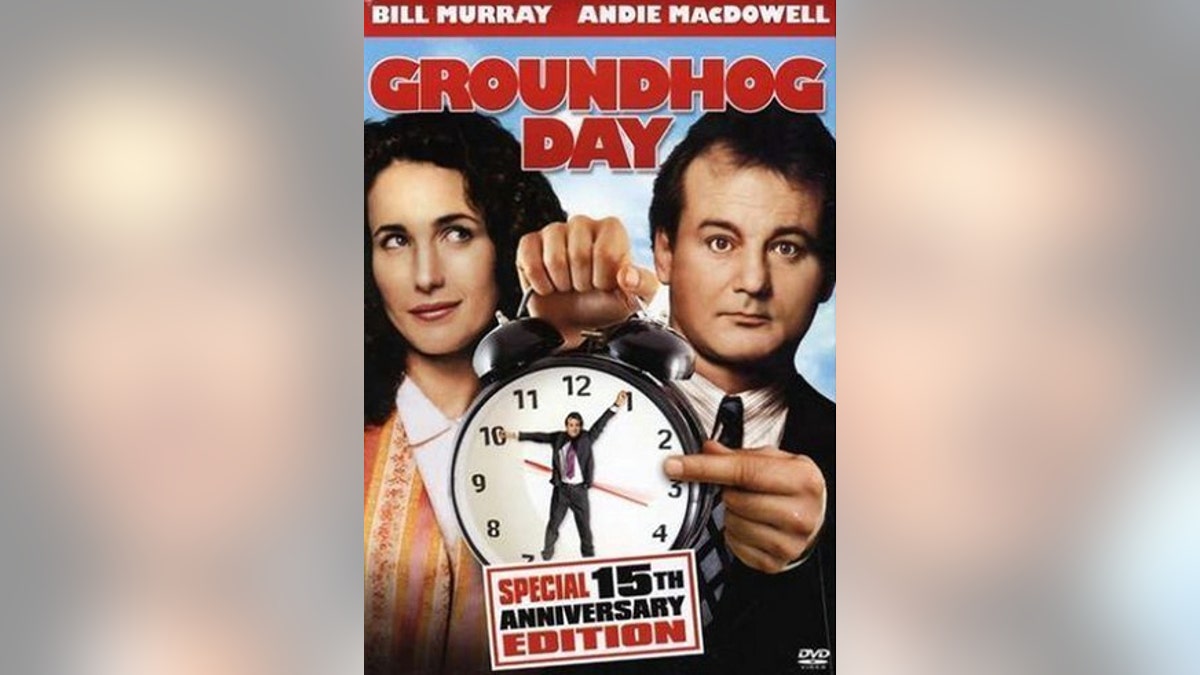
(Columbia Pictures)
Editor's note: The following oped originally appeared in Fox News Opinion on April 24, 2014.
In my new book "The Curmudgeon’s Guide to Getting Ahead: Dos and Don'ts of Right Behavior, Tough Thinking, Clear Writing, and Living a Good Life," I advise my twenty-something readers to watch the 1993 movie, "Groundhog Day," not just once but repeatedly.
I even tell them to substitute"Groundhog Day" for studying Aristotle’s "Nichomachean Ethics."
All of which raises the question: What have I been smoking?
First, for those who haven’t seen it, the plot: An egocentric TV weatherman, Phil Connors (Bill Murray) is sent to Punxsutawney, Pennsylvania, to cover Groundhog Day. He hates the assignment, disdains the town and its people, and can’t wait to get back to Pittsburgh. But a snowstorm strikes, he’s stuck in Punxsutawney, and when he wakes up the next morning, it is Groundhog Day again. And again and again and again. The film’s director and co-writer, the late Harold Ramis, estimated that the movie represented at least thirty or forty years’ worth of days.
Here are some scenes illustrating the unplanned and bumpy trajectory that Phil’s thirty or forty years takes:
Jejeune hedonism
Phil surrounded by every dessert on the menu at the local café, eating his way through them, knowing that 10,000 calories or so will have no consequences the next morning.
Exploiting his situation to ratchet up the hedonism
Phil asking an attractive woman the name of her high school English teacher during one iteration of Groundhog Day to use as an introduction for seducing her (“I was in your in high school English class!”) during the next iteration.
Reaching the limits of hedonism
Phil entering a movie theatre, with a bimbo girlfriend dressed in a skimpy French maid’s outfit, himself dressed as an Argentinian Goucho, whip in hand, bored stiff.
Wretched and suicidal
Phil trying to kill himself in increasingly violent ways, only to wake up each time, unharmed, at 6:00 AM on Groundhog Day.
The eternal meaningless life
Condemned to remain alive, Phil spends all day every day for six months throwing cards into a hat, and gets quite good at it.
The first tendrils of a human connection
Phil repeatedly tries to seduce his TV producer, Rita Hanson (Andie MacDowell), and gets very close, but he still doesn’t know how to really love another person.
The crisis
Phil tries to repeat one happy night with Rita by manipulating it, still intent on getting her to bed, and it ends in despair.
After that….
You have to see it for yourself. Some people have argued that "Groundhog Day" recapitulates the Kübler-Ross stages of dying, and the final part of the movie represents the fifth stage, “acceptance.”
I think something closer Aristotle’s view of human happiness is at work, as Phil sets out to put meaning in his life even though he has just one day to work with—becoming an accomplished pianist and ice sculptor, among other things, burrowing deep into the lives of the people of Punxatawney, and acquiring the Aristotelian virtues. In the course of this process he also falls deeply in love with Rita and, finally, she with him, which breaks the spell.
I’m afraid this exercise is proof that you can’t dissect a soufflé—the description of the episodes I just gave you makes "Groundhog Day" sound far too somber.
It isn’t. It is laugh-out-loud funny, wickedly smart, and the happy ending is just that—inspiritingly happy. But underlying it are profoundly important truths about the life well- lived. So take my advice, even if you aren’t a twenty-something. Watch it. Repeatedly.
